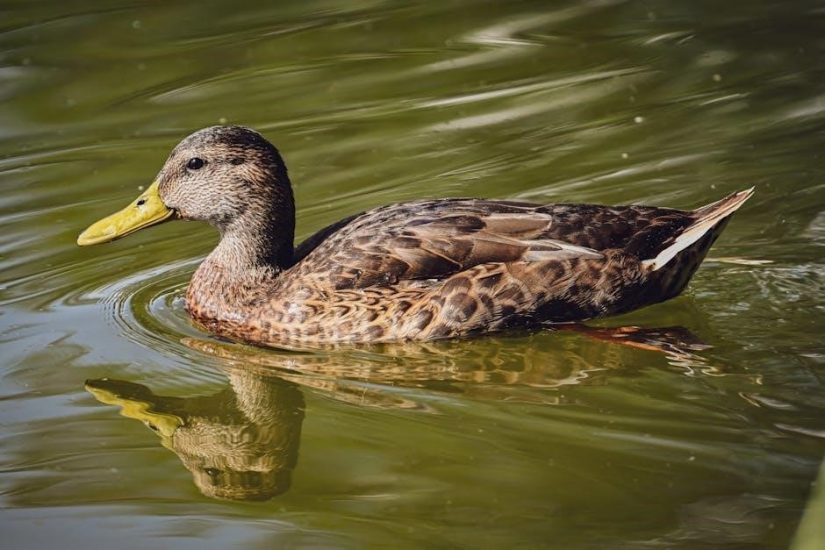Understanding biology is key to grasping life’s fundamental processes. It builds critical thinking, scientific literacy, and collaboration skills, essential for exploring nature and solving real-world challenges.
What is Biology?
Biology is the scientific study of life and living organisms, focusing on their structure, function, growth, evolution, distribution, and taxonomy. It explores the diversity of life, from microscopic cells to entire ecosystems, providing insights into how living beings interact with their environments. By examining biological processes, such as metabolism, genetics, and reproduction, biology seeks to uncover the underlying mechanisms that sustain life. This discipline is foundational for understanding the natural world, addressing health challenges, and advancing technologies. Through observation, experimentation, and analysis, biology offers a comprehensive framework for understanding the complexities of life on Earth.
Why is Biology Important?
Biology is essential for understanding life and addressing global challenges. It provides insights into human health, enabling advancements in medicine, disease prevention, and personalized treatments. By studying ecosystems, biology helps conserve biodiversity, manage natural resources, and combat climate change. In agriculture, biological knowledge improves crop yields and food security. It also drives biotechnology innovations, leading to breakthroughs in genetics, biofuels, and sustainable practices. Understanding biology empowers individuals to make informed decisions about their health, environment, and future technologies. Its applications are vast, impacting everyday life and shaping solutions for a sustainable and healthier world. Biology’s importance lies in its ability to answer fundamental questions about life and apply this knowledge to improve human well-being and the planet.
Branches of Biology
Biology is divided into several branches, each focusing on specific aspects of life. Botany studies plants, while zoology explores animals. Ecology examines interactions between organisms and their environments. Genetics delves into heredity and DNA, and microbiology investigates microorganisms. Anatomy and physiology focus on the structure and function of living organisms. Biochemistry explores the chemical processes within life forms, and evolutionary biology studies the diversity of species over time. These branches collectively provide a comprehensive understanding of life’s complexity and its various processes, enabling advancements in medicine, environmental conservation, and biotechnology. By studying these specialized fields, biologists gain insights into the intricate mechanisms that sustain life on Earth.

Key Concepts in Biology
Key biological concepts include cells, genetics, evolution, and ecosystems. These foundational ideas explain life’s structure, diversity, and interactions, forming the basis of biological study and application.
The Cell: The Basic Unit of Life
The cell is the fundamental structural and functional unit of life, serving as the basic building block for all organisms. Cells are membrane-bound entities containing essential organelles like the nucleus, mitochondria, and ribosomes. The nucleus houses genetic material, directing cellular activities, while mitochondria generate energy through cellular respiration. Photosynthesis occurs in chloroplasts, specific to plant cells. Cells communicate, adapt, and reproduce, with cell division being crucial for growth and reproduction. Studying cells reveals their intricate functions and structures, essential for understanding biology. From single-celled organisms to complex tissues, cells drive life’s processes, making them a cornerstone of biological study and application in medicine, agriculture, and conservation. Their diversity and specialization highlight life’s complexity and adaptability, showcasing biology’s core principles. Understanding cells is vital for grasping life’s mechanisms and advancements in biological sciences.
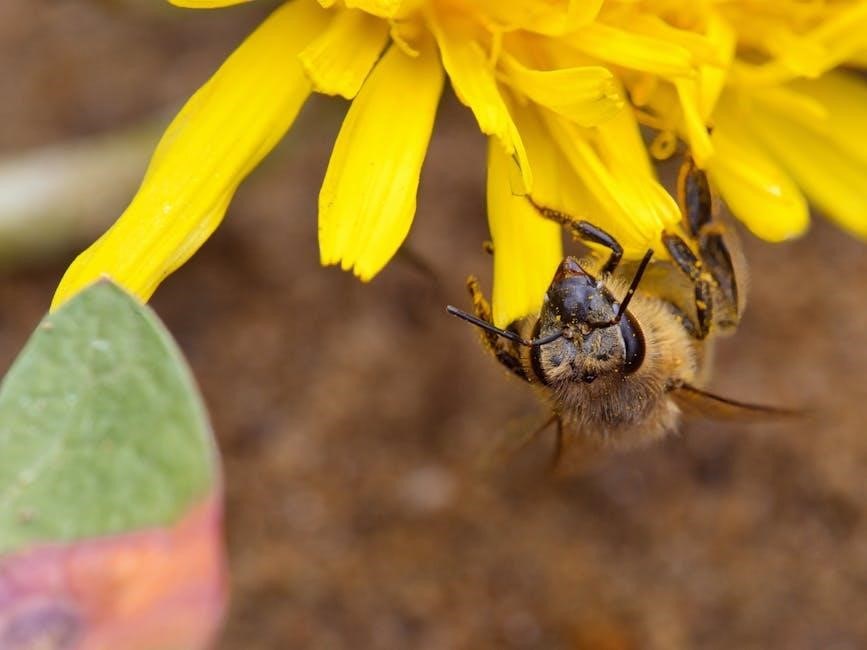
Genetics and DNA
Genetics is the study of heredity and variation in organisms, with DNA as its central focus. DNA, or deoxyribonucleic acid, is a double-helix molecule containing genetic instructions for life. Its structure, discovered by Watson, Crick, and Franklin, reveals how genes are encoded and passed on. The sequence of nucleotides determines genetic information, influencing traits from eye color to disease susceptibility. Key concepts include replication, transcription, and translation, which enable genetic material to be inherited and expressed. Understanding genetics explains inheritance patterns, evolutionary changes, and the basis of genetic disorders. Modern advancements in genetic engineering and CRISPR technology have revolutionized biology, offering tools to manipulate DNA for medical, agricultural, and biotechnological applications. Studying genetics provides insights into life’s diversity and the mechanisms driving biological processes, making it a cornerstone of modern biology.
Evolution and Natural Selection
Evolution is the study of how species change over time through genetic variations and environmental pressures. Natural selection, a key driving force, favors individuals with traits that enhance survival and reproduction. This process, described by Charles Darwin, explains biodiversity and adaptation. Over generations, advantageous traits become more common, while less favorable ones diminish. Fossil records, genetic evidence, and comparative anatomy support evolutionary theory. Understanding evolution reveals how life forms have diversified and adapted to ecosystems. It also explains the emergence of complex organisms from simpler ancestors. Modern biology relies on evolutionary principles to study disease resistance, species conservation, and ecological balance, making it a foundational concept in understanding life’s history and diversity.
Ecosystems and Ecology
Ecosystems are complex networks of interactions between living organisms and their environment. Ecology studies these relationships, focusing on energy flow, nutrient cycling, and biodiversity. Ecosystems range from forests to oceans, each supporting unique communities. Key components include producers, consumers, and decomposers, which maintain balance. Human activities, such as pollution and habitat destruction, disrupt this equilibrium, highlighting the need for conservation. Understanding ecosystems aids in managing natural resources and addressing environmental challenges. Biologists use ecological principles to predict how changes impact species and ecosystems, ensuring sustainable coexistence with nature. This knowledge is vital for maintaining healthy, resilient ecosystems that support all life forms.
Study Techniques for Biology
Effective note-taking, flashcards, and visual aids like diagrams enhance biology learning. Technology tools and active participation in discussions also boost understanding and retention of complex biological concepts efficiently.
Effective Note-Taking Strategies
Effective note-taking is crucial for understanding biology, as it helps organize complex information. Use methods like the Cornell System: divide paper into sections for notes and summaries. Record key terms and concepts during lectures, and review notes promptly. Prioritize active listening over transcribing everything, focusing on main ideas. Use symbols and abbreviations to save time. After class, elaborate on notes to enhance retention. Reviewing notes regularly and cross-referencing with textbooks or online resources improves comprehension. Additionally, discuss notes with peers to clarify doubts and gain new insights. Consistent and organized note-taking builds a strong foundation for mastering biological concepts and prepares effectively for exams.
Using Flashcards for Memorization
Flashcards are a powerful tool for memorizing biological terms and concepts. Create cards with a term or question on one side and the definition or explanation on the other. Use active recall by quizzing yourself regularly. Spaced repetition systems, like Anki, help reinforce memory over time. Prioritize key concepts and complex processes, breaking them into manageable chunks. Include diagrams or images for visual learners. Review flashcards consistently, especially before exams, to ensure long-term retention. Digital apps like Quizlet offer interactive features, while physical cards provide tactile benefits. Test yourself frequently to identify gaps in understanding and focus on areas needing improvement. Flashcards are versatile, making them an essential study aid for mastering biology effectively.
Visual Aids: Diagrams and Charts
Visual aids like diagrams and charts are indispensable for understanding complex biological concepts. They simplify intricate processes, such as cellular respiration or DNA replication, into clear, digestible visuals. Diagrams of cell structures or ecosystems help students visualize relationships and functions. Flowcharts are particularly effective for illustrating sequences, like the stages of mitosis or the water cycle. Charts comparing different biological phenomena, such as types of cells or classifications of organisms, enhance comprehension. Color-coded and labeled visuals make abstract ideas tangible. Interactive tools, such as digital diagrams, allow students to explore concepts dynamically. These aids not only improve retention but also make studying engaging. Using diagrams and charts alongside textual information creates a holistic learning experience, catering to visual learners and reinforcing memory of key biological principles effectively. They are essential for breaking down biology into manageable, understandable components.
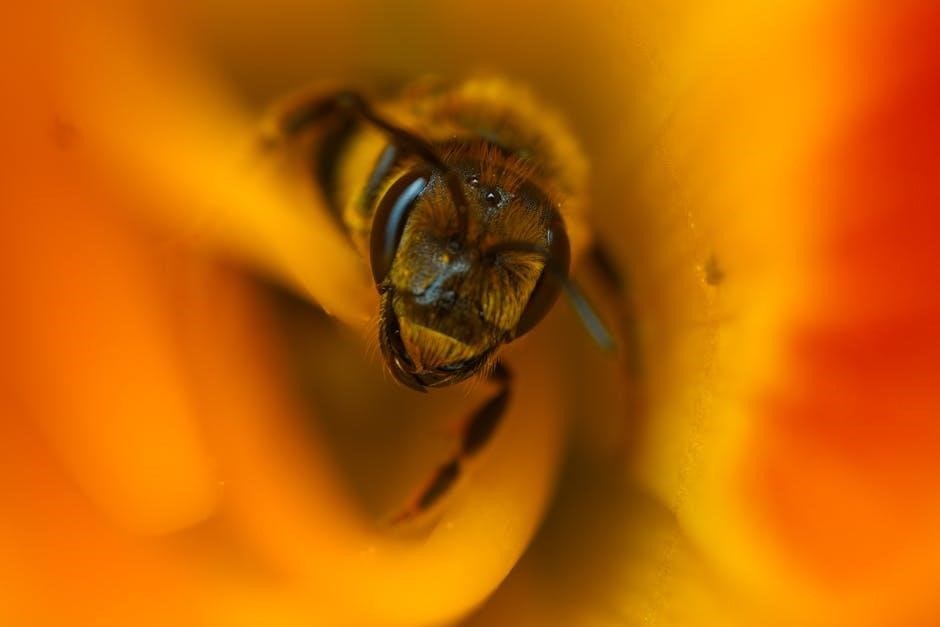
The Role of Technology in Learning Biology
Technology has revolutionized the way biology is studied and understood. Digital tools, such as interactive simulations and virtual labs, allow students to explore complex biological processes in a dynamic and engaging manner. AI-driven platforms like ChatGPT Deep Research assist in gathering and analyzing scientific information, making research more efficient. Online resources, including educational videos and interactive diagrams, provide accessible learning materials. Additionally, 3D models of cells and organisms help visualize microscopic structures. Virtual dissections and simulations enable hands-on learning without physical specimens. Technology also supports personalized learning through adaptive software and real-time feedback. These tools not only enhance understanding but also foster a deeper appreciation for biological concepts, making learning biology more accessible and interactive for students of all levels.
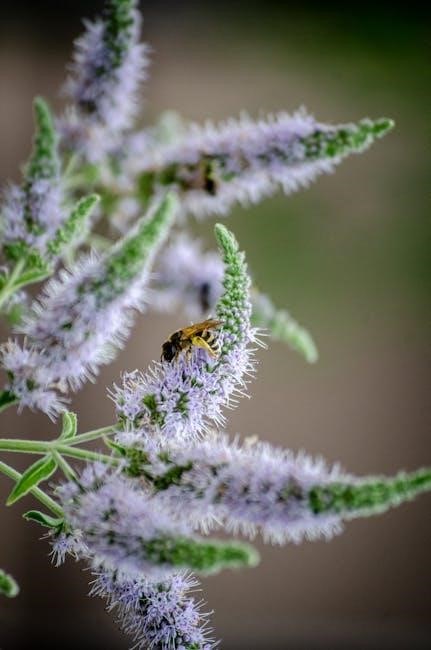
Practical Applications of Biology
Biology’s practical applications include advancing medicine, enhancing agriculture, conserving ecosystems, and driving biotechnology innovations, all of which address real-world challenges and improve human life and environmental sustainability.
Biology in Medicine
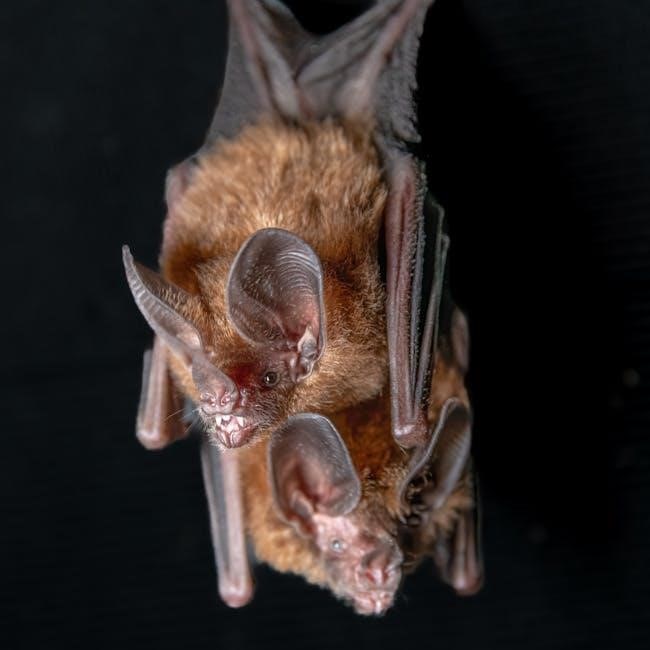
Biology plays a vital role in medicine, enabling the understanding of diseases, development of treatments, and creation of personalized therapies. Advances in genetics and molecular biology have led to targeted drug therapies and gene editing technologies like CRISPR. Biomedical research focuses on understanding human physiology and pathogens, driving innovations in vaccines and diagnostic tools. Medical biotechnology has revolutionized healthcare, improving drug delivery systems and regenerative medicine. By studying biological processes, scientists develop new surgical techniques and prosthetics, enhancing patient outcomes. Biology’s applications in medicine are essential for addressing global health challenges, from infectious diseases to cancer, ensuring continuous progress in saving and improving lives worldwide.

Biology in Agriculture
Biology is foundational in agriculture, driving advancements in crop and livestock production. Understanding genetic diversity enables selective breeding for improved yields and disease resistance. Biotechnology introduces genetically modified organisms (GMOs) to enhance nutritional value and pest resistance. Biological pest control methods reduce reliance on chemicals, promoting eco-friendly farming. Soil biology studies improve fertility through nitrogen-fixing bacteria and organic matter management. Advances in plant physiology optimize irrigation and nutrient uptake, boosting efficiency. Livestock breeding benefits from genetic research, enhancing meat and dairy production. These biological applications ensure sustainable agriculture, addressing food security and environmental challenges while fostering innovation for future farming practices.
Biology in Conservation
Biology plays a vital role in conservation by providing insights into ecosystems, species behavior, and environmental impacts. Ecological principles guide habitat restoration and species preservation. Genetic studies help identify endangered species and track population dynamics. Understanding biodiversity enables targeted conservation strategies. Biological research informs policies to combat habitat loss, climate change, and invasive species. Techniques like species reintroduction and ecosystem monitoring rely on biological knowledge. Conservation biology ensures sustainable practices, protecting natural resources for future generations while addressing ecological challenges effectively.
Biology in Biotechnology
Biology forms the foundation of biotechnology, enabling advancements in genetic engineering, drug development, and regenerative medicine. By manipulating biological systems, biotechnology creates innovative solutions for medical, agricultural, and environmental challenges. For instance, genetic engineering allows for the creation of disease-resistant crops and personalized therapies. Biotechnological applications also include the production of biofuels, bioproducts, and synthetic biology. Understanding biological processes at the molecular level is crucial for developing these technologies. Biotechnology has revolutionized healthcare through advancements in diagnostics, vaccines, and gene therapy. It also addresses environmental issues by improving waste management and pollution control. The integration of biology with technology drives continuous innovation, offering sustainable and ethical solutions for a better future. This field exemplifies how biological knowledge can be harnessed to transform industries and improve human life.
Skills for Understanding Biology
Biology requires critical thinking, scientific literacy, collaboration, and intellectual humility. These skills enable students to analyze complex concepts, interpret data, and apply knowledge to real-world scenarios effectively.
Critical Thinking in Biology
Critical thinking is essential in biology, enabling students to analyze complex concepts, evaluate evidence, and form well-supported conclusions. By questioning assumptions and interpreting data objectively, learners develop a deeper understanding of biological processes. This skill fosters problem-solving abilities, allowing biologists to approach challenges methodically and innovatively. Cultivating critical thinking enhances scientific literacy and prepares individuals for real-world applications in medicine, conservation, and biotechnology. It also encourages intellectual humility, as scientists recognize the limitations of their knowledge and remain open to new discoveries. Ultimately, critical thinking transforms biology from mere memorization into a dynamic, inquiry-based discipline that drives progress and adaptation in various fields.
Scientific Literacy

Scientific literacy is the ability to understand and apply scientific concepts to real-world situations, fostering informed decision-making. It involves interpreting data, evaluating evidence, and recognizing the importance of biology in everyday life. By developing scientific literacy, individuals can engage with topics like health, genetics, and environmental conservation more effectively. This skill bridges the gap between scientific knowledge and societal issues, enabling people to critically assess information and make educated choices. Scientific literacy empowers individuals to navigate complex biological advancements and their implications, ensuring they contribute to meaningful discussions about science and its applications. Cultivating this skill is vital for fostering a society that values evidence-based reasoning and embraces lifelong learning in biology and beyond.
Collaboration and Teamwork
Collaboration and teamwork are essential skills in biology, as scientific advancements often result from collective efforts. Working in teams fosters diverse perspectives, enhances problem-solving, and accelerates discovery. Biologists collaborate to design experiments, analyze data, and interpret results, ensuring comprehensive understanding. Effective communication and respect for expertise are key to successful teamwork. In biology, teamwork extends beyond laboratories, involving educators, researchers, and policymakers to address global challenges like disease and conservation. By nurturing these skills, individuals contribute to a stronger scientific community and drive meaningful progress in understanding life’s complexities. Collaboration also prepares students for real-world scenarios, where interdisciplinary approaches are critical for solving complex biological and environmental issues.
Intellectual Humility
Intellectual humility is the recognition of the limits of one’s knowledge and a willingness to learn from others. In biology, this trait fosters a growth mindset, encouraging scientists and students to embrace uncertainty and question assumptions. It promotes open-mindedness, allowing for the exploration of diverse perspectives and the integration of new evidence. Humble learners are more likely to engage in meaningful discussions, seek feedback, and adapt their understanding as new discoveries emerge. By cultivating intellectual humility, individuals in biology develop a deeper appreciation for the complexity of life and a stronger foundation for lifelong learning. This approach not only enhances personal growth but also contributes to a more collaborative and progressive scientific community.
Further Learning Resources
Explore diverse resources like eBooks, online tutorials, and educational videos to deepen your understanding of biology. These tools enhance retention, cater to various learning styles, and provide accessible knowledge.
Recommended Biology Textbooks
For a deeper understanding of biology, several textbooks are highly recommended. “Biology: The Core” by Peter H. Raven and George B. Johnson is a comprehensive resource, covering foundational concepts like cells, genetics, and evolution. Another excellent choice is “Campbell Biology,” known for its detailed explanations and engaging visuals. Additionally, “Molecular Biology of the Cell” by Bruce Alberts is ideal for those interested in advanced topics. These textbooks provide structured learning, practical examples, and up-to-date research, making them invaluable for students and enthusiasts alike. They are available in both physical and digital formats, including PDFs, ensuring accessibility for all learners. These resources are essential for building a strong foundation in biological sciences and fostering a lifelong appreciation for the subject.
Online Courses and Tutorials
Science Videos and Documentaries
Science videos and documentaries are powerful tools for understanding biology. Platforms like YouTube offer channels such as Crash Course Biology, which simplifies complex concepts through engaging visuals and storytelling. Documentaries like Our Planet and The Hunt provide stunning visuals of ecosystems, making biology relatable and captivating. Websites like PBS Nature and BBC iPlayer feature high-quality documentaries that explore topics from evolution to cellular biology. These resources are ideal for visual learners, offering real-world examples that complement textbook learning. They make abstract concepts more tangible and inspire curiosity about the natural world. Science videos and documentaries are accessible, educational, and entertaining, making them invaluable for students and enthusiasts alike.
Biology PDFs and eBooks
Biology PDFs and eBooks are excellent resources for in-depth learning. Platforms like Google Books, ResearchGate, and ScienceDirect offer free and paid PDFs on various biological topics. eBooks provide comprehensive coverage of subjects, from molecular biology to ecology, making them ideal for self-study. Many textbooks are available in PDF format, allowing students to access materials anytime, anywhere. Websites like NCBI and SpringerLink also offer downloadable PDFs of scientific articles and book chapters. These resources are particularly useful for those who prefer digital learning or need quick access to information. Biology PDFs and eBooks are cost-effective, convenient, and often include interactive features like hyperlinks and search functions, enhancing the learning experience. They are a valuable addition to any biology student’s study toolkit.
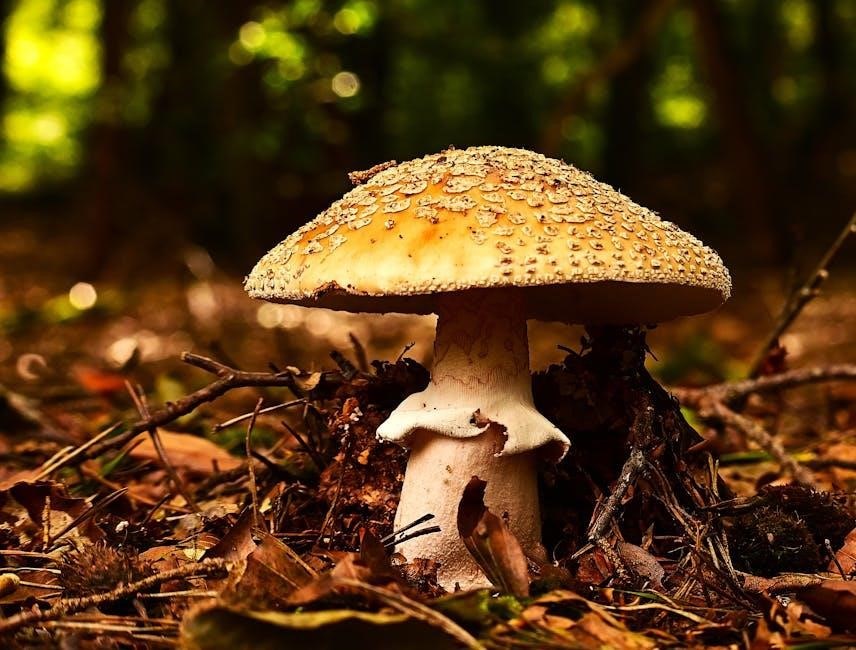
The Future of Biology
The future of biology lies in emerging trends like CRISPR, synthetic biology, and AI-driven research, revolutionizing medicine, agriculture, and conservation, while fostering sustainable solutions for global challenges.
Emerging Trends in Biological Research
Emerging trends in biological research include advancements in gene editing tools like CRISPR, synthetic biology, and the integration of AI and machine learning. These innovations enable researchers to explore complex biological systems with unprecedented precision. Synthetic biology focuses on designing new biological pathways and organisms, offering solutions for biofuel production and disease treatment. AI-driven analytics accelerate data interpretation, aiding in disease modeling and personalized medicine. Additionally, biotechnology advancements are revolutionizing fields like regenerative medicine and biomanufacturing. These trends emphasize interdisciplinary collaboration, blending biology with engineering, computer science, and mathematics. As these technologies evolve, they promise to address global challenges, from climate change to food security, while opening new avenues for scientific discovery and applications.
The Impact of Technology on Biology
Technology has revolutionized biology by providing innovative tools for research and discovery. Advances in CRISPR gene-editing tools enable precise modifications in DNA, while synthetic biology allows scientists to design new biological pathways. AI and machine learning accelerate data analysis, aiding in disease modeling and personalized medicine. Biotechnology integrates engineering and biology to develop novel solutions, such as regenerative medicine and biomanufacturing. These advancements foster interdisciplinary collaboration, blending biology with fields like computer science and mathematics. The integration of technology enhances our understanding of complex biological systems, driving breakthroughs in healthcare, agriculture, and conservation. As technology evolves, it promises to address global challenges, from climate change to food security, while unlocking new frontiers in scientific exploration and applications.
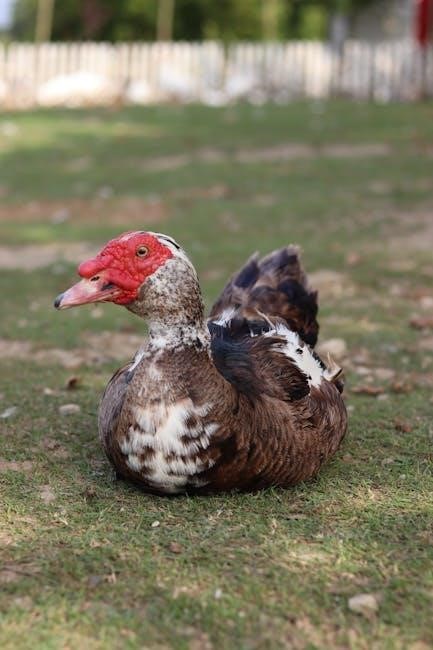
Career Opportunities in Biology
Biology offers a wide range of career opportunities across various fields. Biologists can work in research, healthcare, environmental science, education, and biotechnology. Roles include microbiologists, geneticists, ecologists, and wildlife biologists. The healthcare sector demands professionals like biomedical engineers and pharmacologists. Environmental biologists contribute to conservation and sustainability efforts, while educators inspire future scientists. Biotechnology opens doors in agricultural innovation and genetic engineering. With advancements in technology, careers in bioinformatics and synthetic biology are emerging. A biology degree also prepares individuals for medical, veterinary, or dental school. Critical thinking, scientific literacy, and collaboration skills are essential for success in these roles. As biological knowledge expands, so do the opportunities to make a meaningful impact in improving human lives and understanding the natural world.
